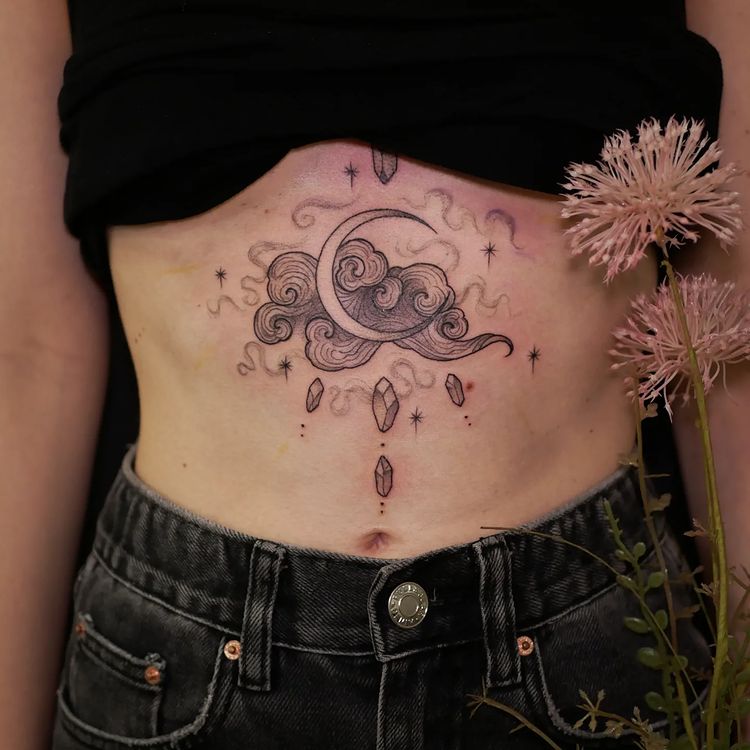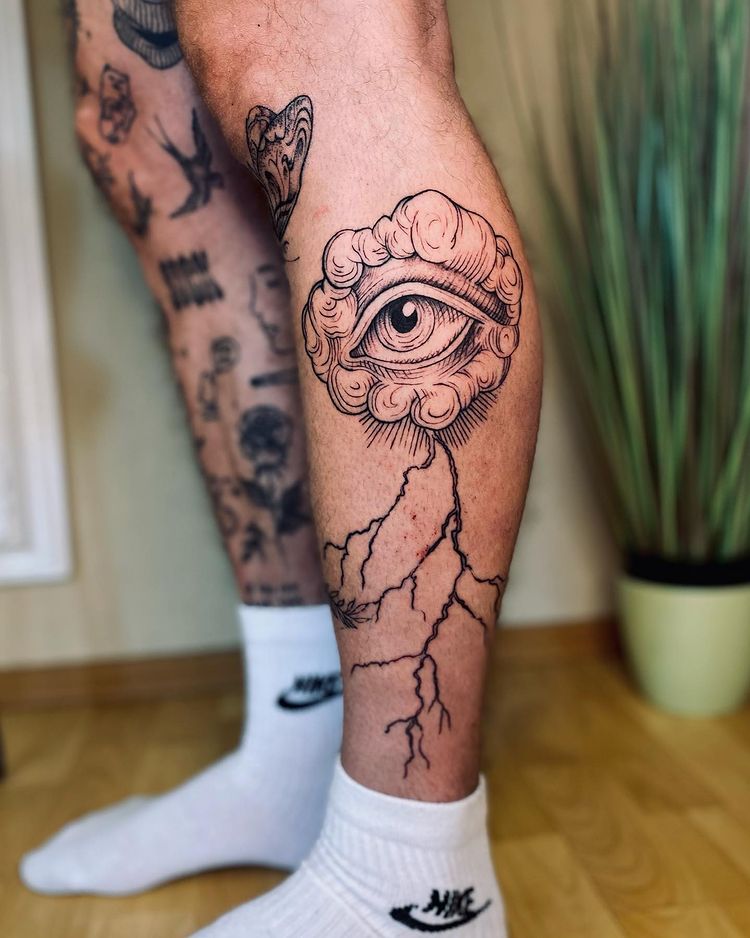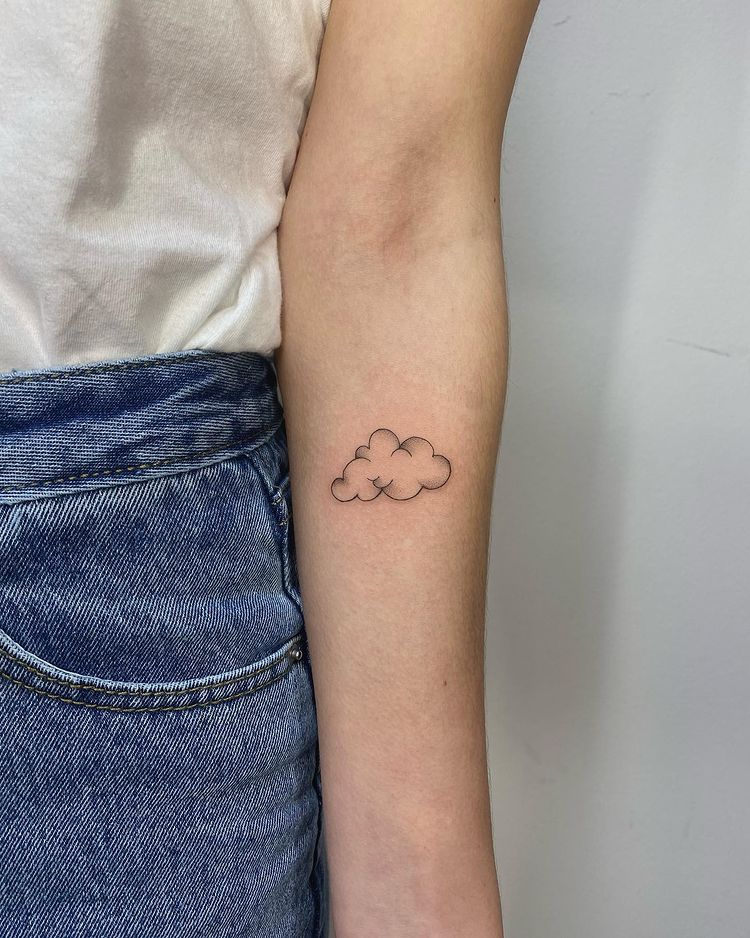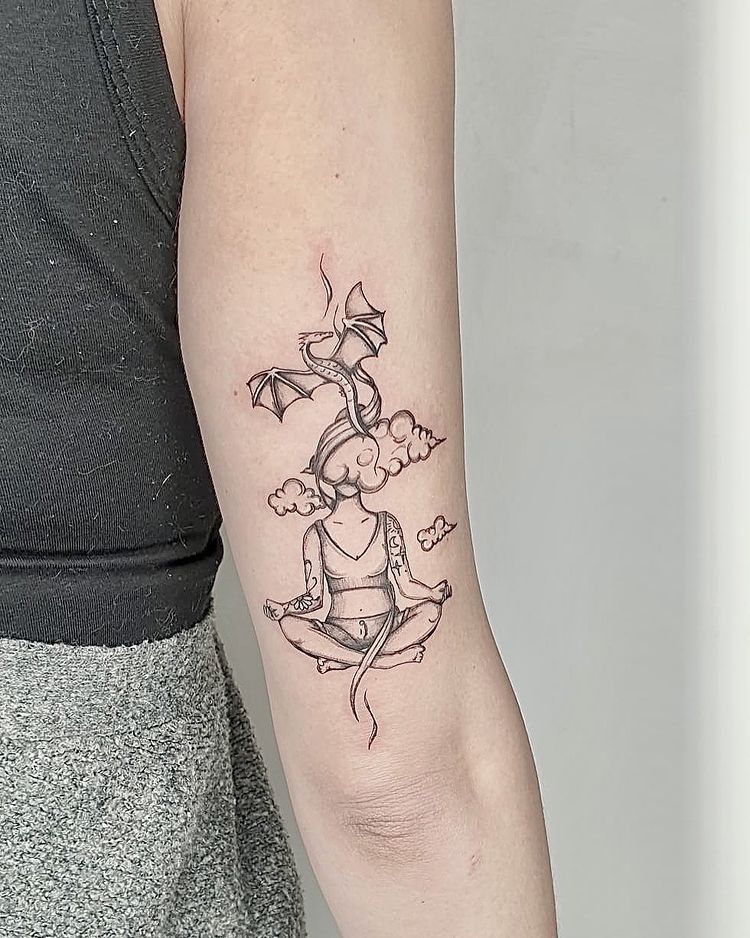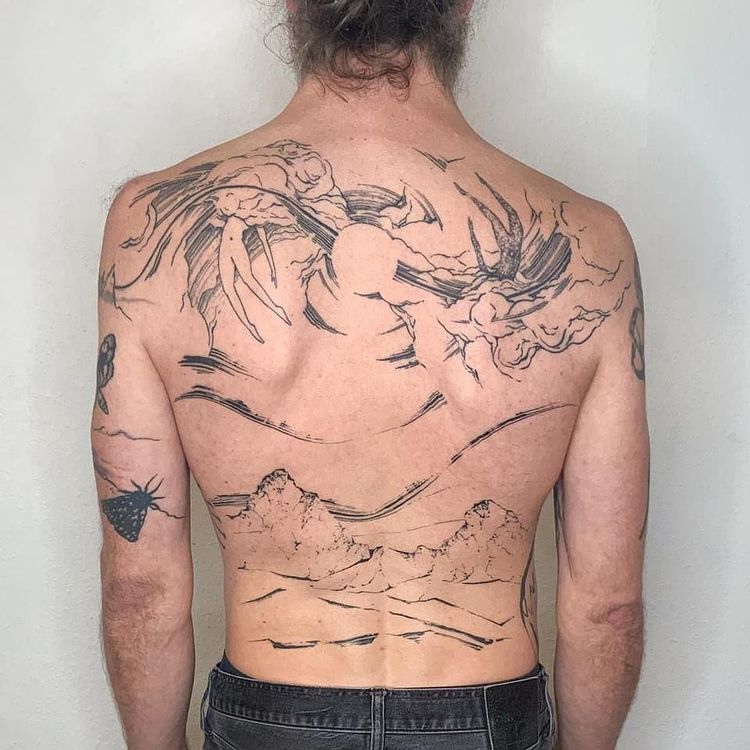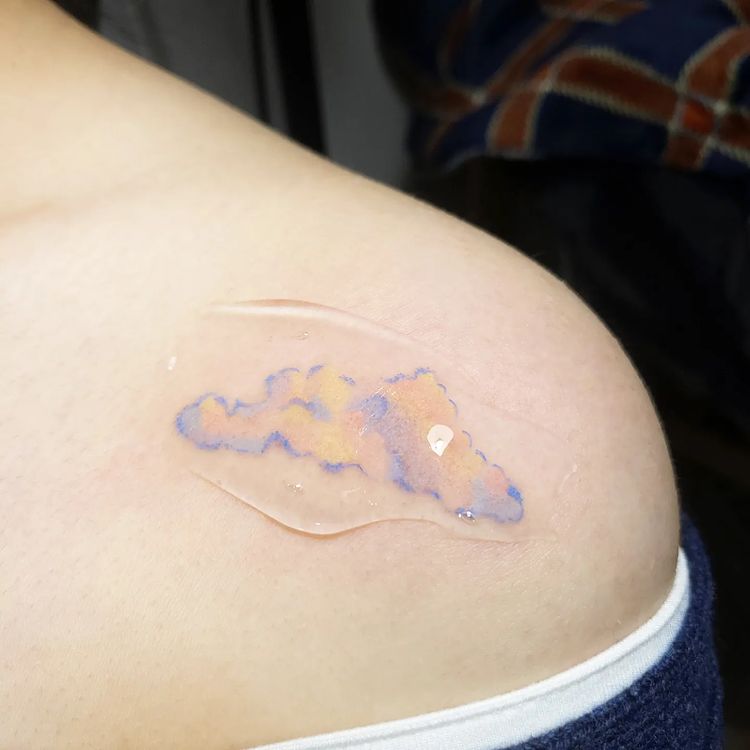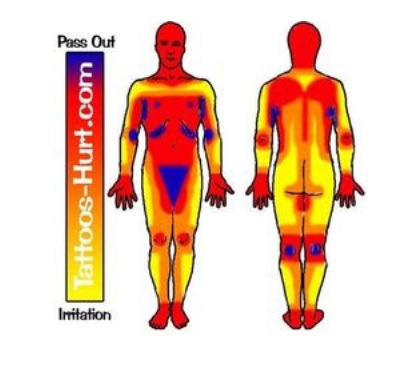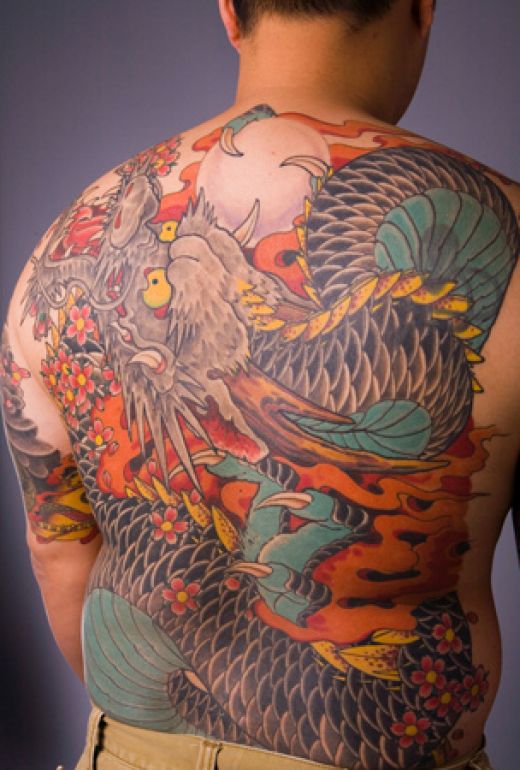A cloud tattoo comes in many forms. Some people prefer realistic clouds, while others want something closer to what you might see in traditional tattoo designs. You can get surreal designs as well. There’s really no limit.
There are, however, some standards, history, and meanings that should be taken into account when thinking about your tattoo. Read this quick guide and make sure you’re getting the tattoo you want.
The Different Types of Cloud Tattoo
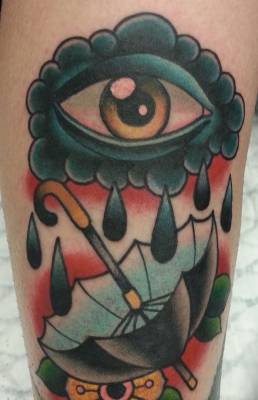
There are many, many kinds of cloud tattoo designs out there and most have a meaning that is unique to their wearer. There are two styles that tend to be the most popular though.
The first stems from the traditional tattoo style and the second is more of a realistic style that has a strong tie to religious belief. We’ll take a look at each one and discuss their meaning and variations.
The (Typically Religious) Realistic Cloud Tattoo
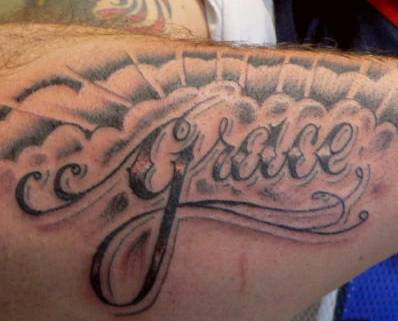
This type of tattoo generally appears with words in the script. Typically they are the names and/or dates of someone who has passed away. It’s also common to see Bible verses appearing with these tattoos.
The design of this type of tattoo is intended to be representative of actual clouds, often depicted with rays of light shining through them. These tattoos are most commonly done in black and grey only.
Meaning and Symbolism of the (Typically Religious) Cloud Tattoo
As you might expect, this type of tattoo represents heaven. Generally, it is intended as a nod to their religious beliefs when accompanied by a Bible verse. If a person’s name or face appears with the tattoo, then the tattoo is likely an homage to someone the wearer knew who passed away. The clouds in that case represent the belief that the deceased has gone to heaven.
The Traditional Style Cloud Tattoo
Done in the popular American Traditional tattoo style, or the Neo-traditional style (Neo-Trad), this tattoo is usually instantly recognizable. The cloud often features scalloped edges and employs either traditional shading or pointillism to give it depth and weight.
The traditional version of this tattoo design often features either rain or lightning bolts and is sometimes accompanied by an umbrella (sometimes upside down and collecting the water). It is also quite common to see these tattoos depicted with an all-seeing eye in the middle of the cloud.
The Meaning of the Traditional Style Cloud Tattoo
The meaning behind the traditional style cloud tattoo is far less concrete. The cloud might mean “bad luck” or “misfortune”, especially when accompanied by rain or lightning.
In Chinese culture, clouds have been used to represent transformation and change. In the Zen belief, clouds symbolize detachment and impermanence. Clouds also combine the symbolism of both air and water, which means these tattoos could represent the balance between emotion and intellect.
Similar to the realistic version of this tattoo design, it’s possible that it could symbolize heaven–though that is an uncommon meaning for the traditional version of this design. Many designs also depict the sun being partially or completely obscured by a cloud, which can mean that something is hidden from understanding, or that something has been eclipsed by mystery.
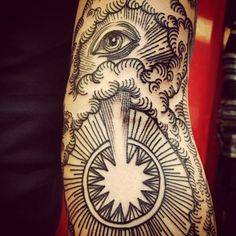
Variations on the traditional design typically modify or alter the symbolism of this tattoo, but in general, the traditional design is open to far wider interpretation and in many cases is purely aesthetic.
Another, alternate interpretation of the symbolism and meaning of cloud tattoos stems from the symbol’s use in Tarot. We’re not even remotely knowledgeable enough to talk Tarot with you, so for those meanings and interpretations, we think this site may be a better source of information.
Other Types of Cloud Tattoos
While realistic and traditional style tattoos are the most commonly used styles when tattooing clouds, they aren’t the only ones. Many tattoo styles used the image of clouds in one form or another.

Japanese traditional tattoos, clouds are often tattooed as a backdrop for deities and spirits. The common symbolism associated with air and water often applies, but the tattoo can also be interpreted as a representation of deity or other-worldliness, similar to the symbolism of the realistic cloud tattoos.
Clouds are sometimes used to represent the “Four Winds”, particularly in nautical-themed tattoo work. The image of any one of the Four Winds is usually shown as a cloud with a face that is blowing in a particular direction and with varying intensity. Nautical-themed tattoos typically follow either the American Traditional or British Traditional tattooing styles.
Since sometimes a tattoo is just a tattoo (meaning it’s purely aesthetic), cartoon-style clouds are also popular. Though they don’t necessarily have or need a meaning, these are typically some of the more interesting cloud tattoos. The style of the cartoon cloud varies, but New School and Cartoon art styles are typically used for this tattoo.
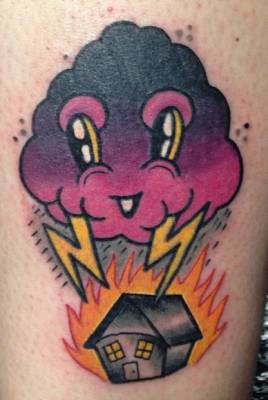
Cloud Tattoo on Different Body Parts
Let’s check out how does a cloud tattoo looks on the body.
Cloud Sternum Tattoo
Cloud Elbow Tattoo
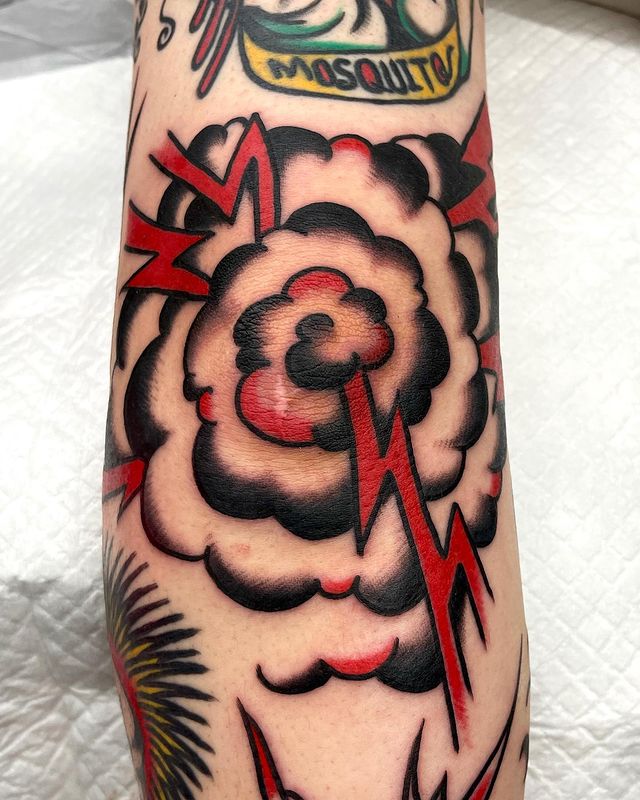
Cloud Thigh Tattoo
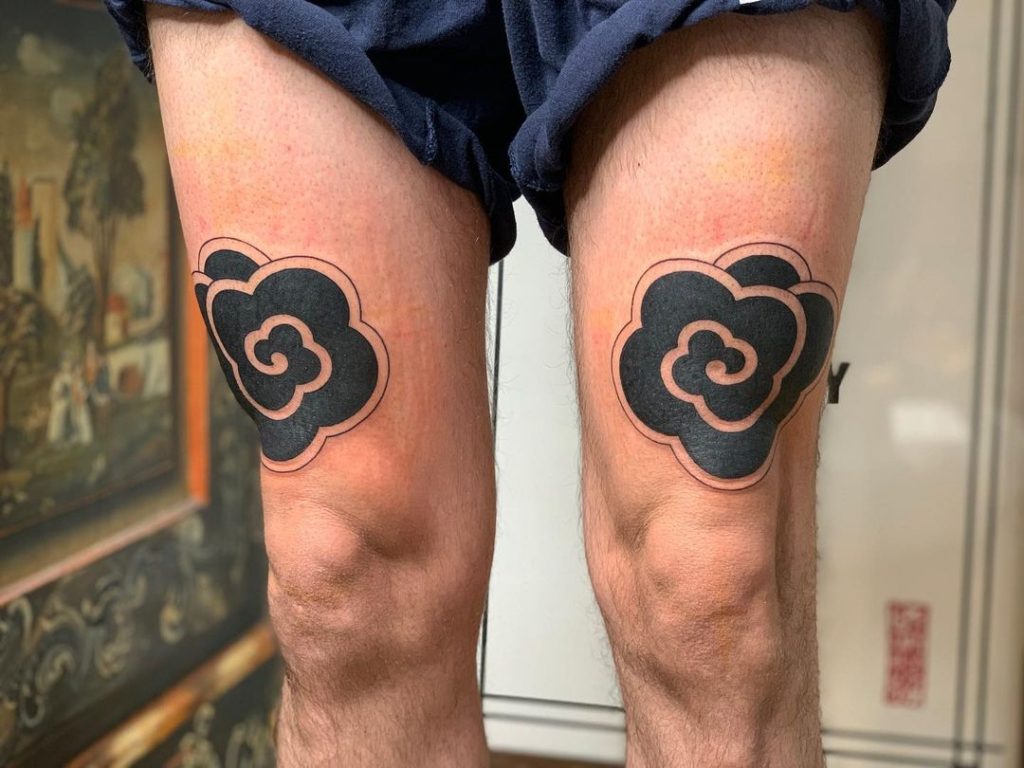
Cloud Hip Tattoo
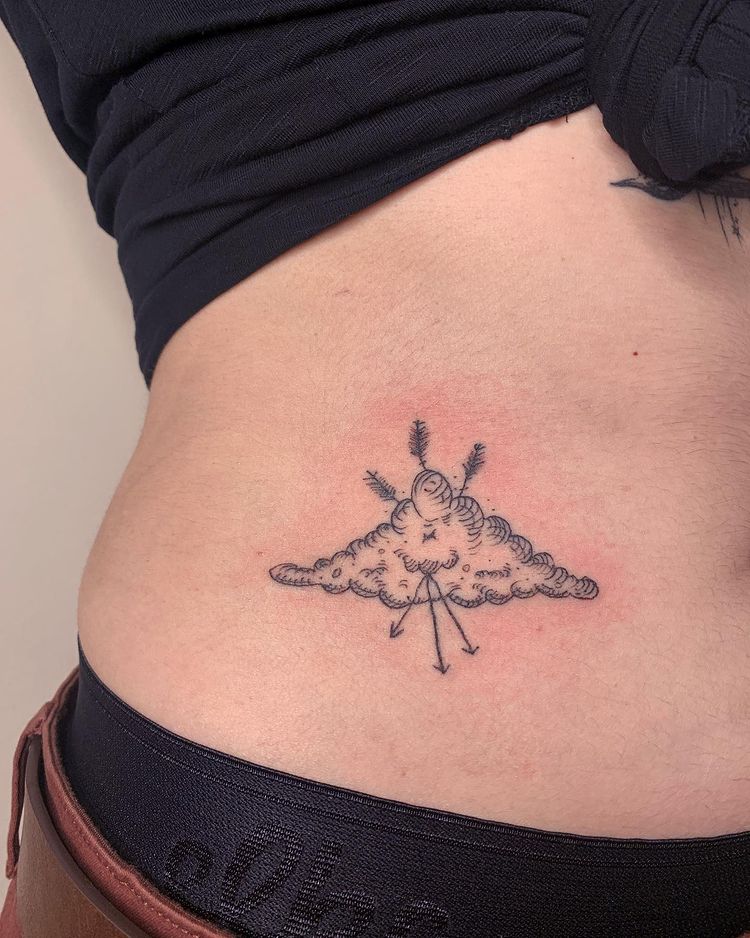
Cloud Tattoo Behind the Ear
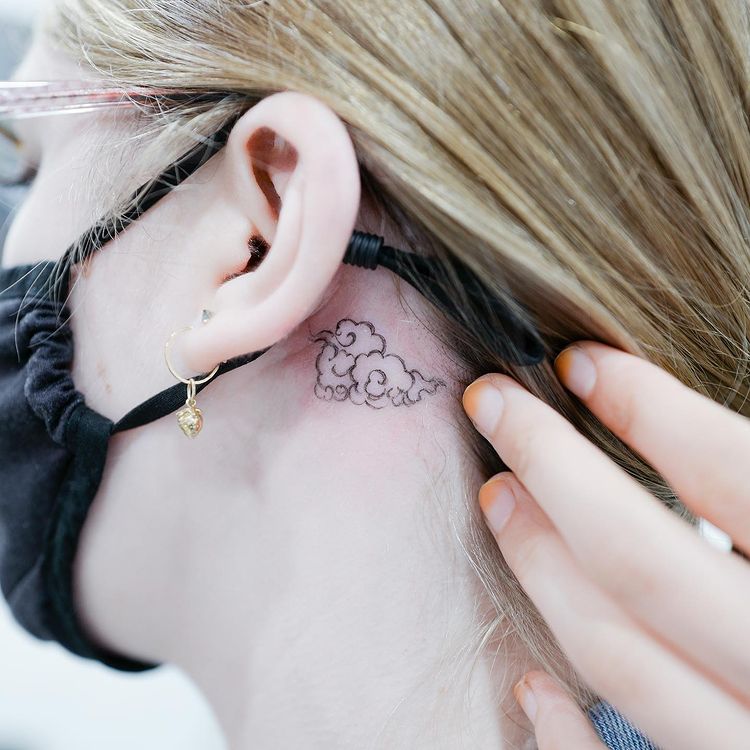
Cloud Leg Tattoo
Cloud Forearm Tattoo
Cloud Back Shoulder Tattoo
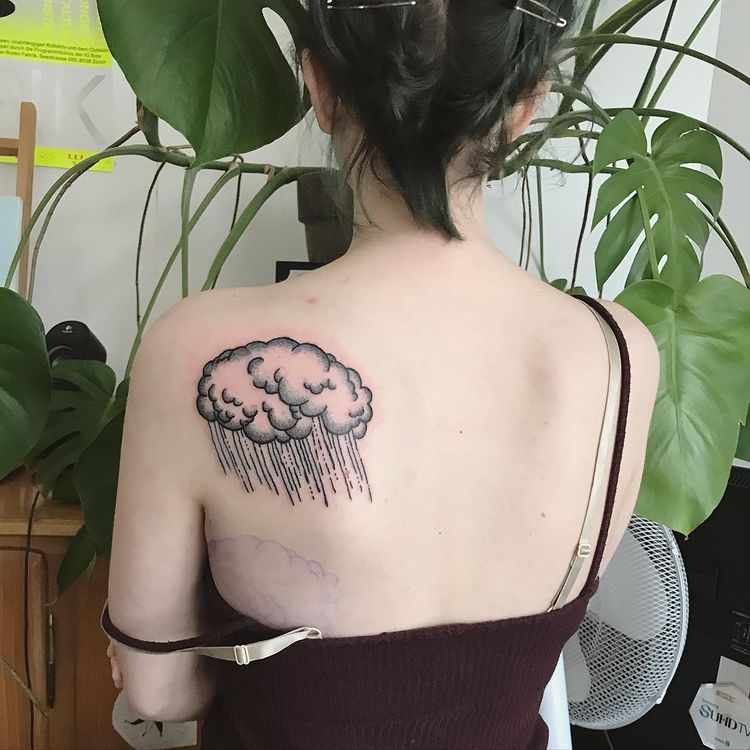
Cloud Back Arm Tattoo
Cloud Knee Tattoo
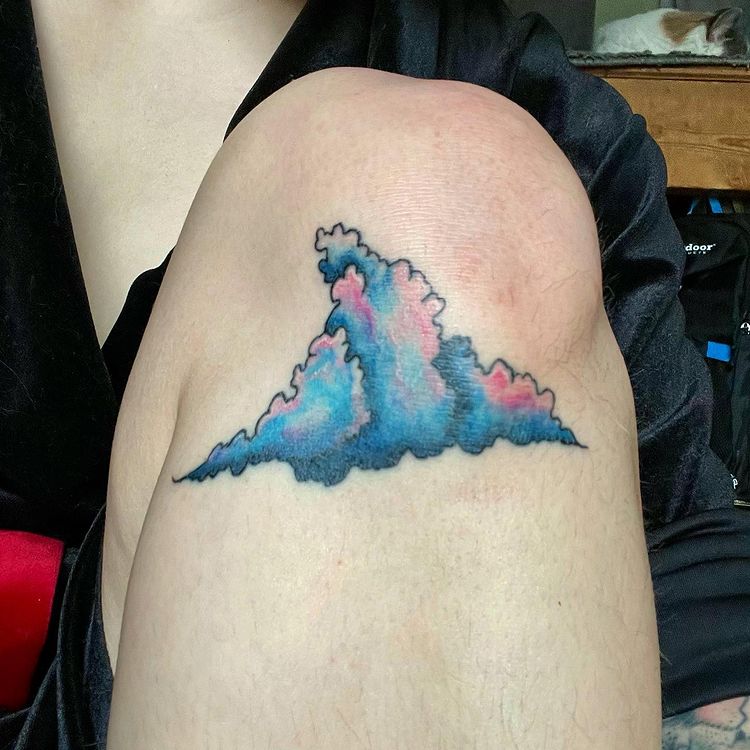
Cloud Rib Tattoo

Cloud Back Tattoo
Cloud Arm Tattoo
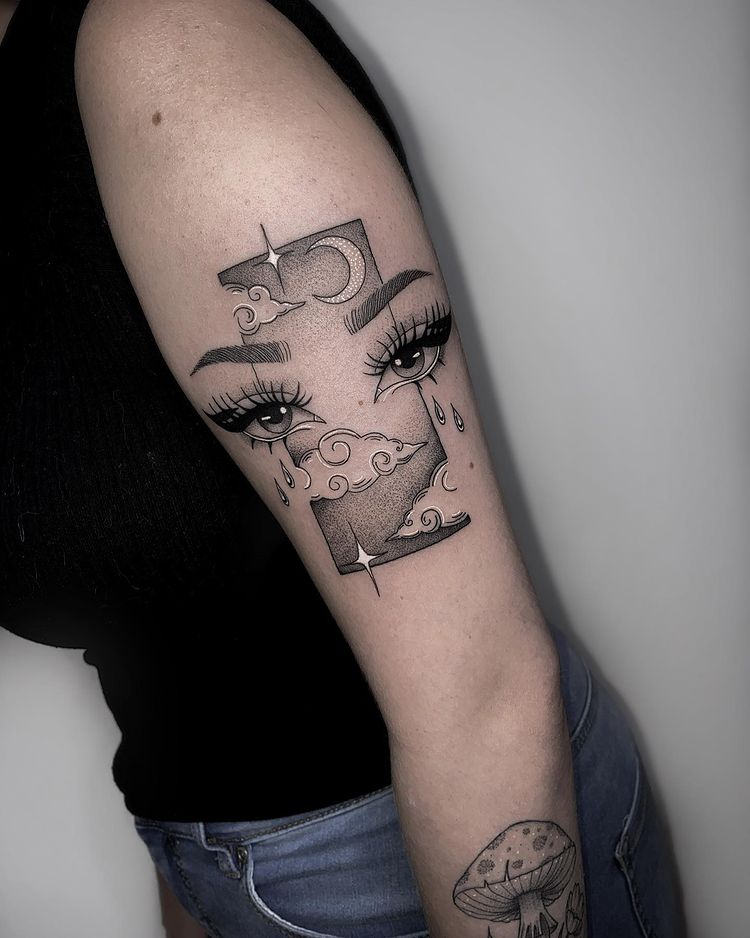
Cloud Shoulder Tattoo
Conclusion
Ultimately, the meaning of your tattoo is up to you. If you are interested in the traditional meaning of a particular type of tattoo and plan on getting the tattoo done with that intended meaning, then hopefully you’ve found this guide useful.
Remember, cloud tattoos can be quite complex & with complexity comes pain. Still, some places are less painful than others. Luckily, we found a way to ease off your pain — a tattoo pain chart. It’s much easier when you know the most painful places to get tattooed, right?

